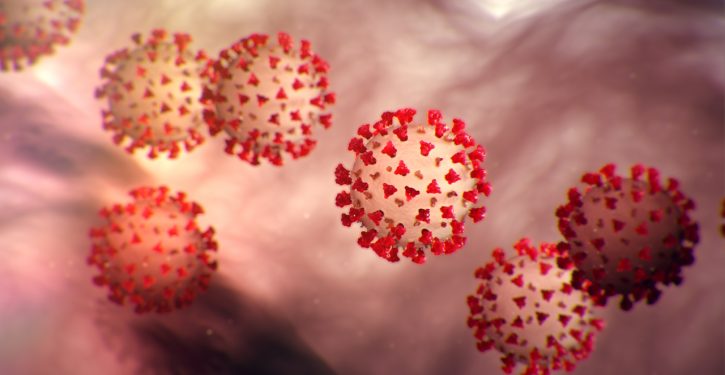
The new omicron variant of the coronavirus isn’t killing many people, yet it is swamping some hospitals, which were already suffering staff shortages. The Atlantic reports that the “new variant is spreading quickly enough to inundate hospitals that were already buckling under the cumulative toll of every previous surge.” And that means health-care systems are crumbling, leaving NON-coronavirus patients worse off. Seriously ill people who don’t have COVID-19 may die as a result, even as the minority of omicron patients who need hospitalization manage to survive despite lousy hospital care rendered inadequate by the vast number of patients burdening the diminished number of hospital staff.
(For most people, of course, omicron is milder than the flu, or no worse than the flu, and those people won’t need to go to the hospital. But those that do need to, may find hospitals crowded and overwhelmed, because of the huge number of people who are getting omicron all at the same time. If it weren’t for its sheer contagiousness, omicron would be a nothing-burger due to its mildness. But the vast numbers of people who will get omicron all at once will still result in a substantial number of hospitalizations in a short period of time.).
Much of what’s wrong happens invisibly. At first, there’s just a lot of waiting. Emergency rooms get so full that “you’ll wait hours and hours, and you may not be able to get surgery when you need it,” Megan Ranney, an emergency physician in Rhode Island, told me. When patients are seen, they might not get the tests they need, because technicians or necessary chemicals are in short supply. Then delay becomes absence. The little acts of compassion that make hospital stays tolerable disappear. Next go the acts of necessity that make stays survivable. Nurses might be so swamped that they can’t check whether a patient has their pain medications or if a ventilator is working correctly. People who would’ve been fine will get sicker. Eventually, people who would have lived will die. This is not conjecture; it is happening now, across the United States. “It’s not a dramatic Armageddon; it happens inch by inch,” Anand Swaminathan, an emergency physician in New Jersey, told me.
In this surge, COVID-19 hospitalizations rose slowly at first, from about 40,000 nationally in early November to 65,000 on Christmas. But with the super-transmissible Delta variant joined by the even-more-transmissible Omicron, the hospitalization count has shot up to 110,000 in the two weeks since then. “The volume of people presenting to our emergency rooms is unlike anything I’ve ever seen before,” Kit Delgado, an emergency physician in Pennsylvania, told me. Health-care workers in 11 different states echoed what he said: Already, this surge is pushing their hospitals to the edge. And this is just the beginning. Hospitalizations always lag behind cases by about two weeks, so we’re only starting to see the effects of daily case counts that have tripled in the past 14 days (and are almost certainly underestimates). By the end of the month, according to the CDC’s forecasts, COVID will be sending at least 24,700 and up to 53,700 Americans to the hospital every single day.
This surge is, in many ways, distinct from the ones before. About 62 percent of Americans are fully vaccinated, and are still mostly protected against the coronavirus’s worst effects. When people do become severely ill, health-care workers have a better sense of what to expect and what to do. Omicron itself seems to be less severe than previous variants, and many of the people now testing positive don’t require hospitalization. But such cases threaten to obscure this surge’s true cost.
Omicron is so contagious that it is still flooding hospitals with sick people. And America’s continued inability to control the coronavirus has deflated its health-care system, which can no longer offer the same number of patients the same level of care. Health-care workers have quit their jobs in droves; of those who have stayed, many now can’t work, because they have Omicron breakthrough infections. “In the last two years, I’ve never known as many colleagues who have COVID as I do now,” Amanda Bettencourt, the president-elect of the American Association of Critical-Care Nurses, told me. “The staffing crisis is the worst it has been through the pandemic.” This is why any comparisons between past and present hospitalization numbers are misleading: January 2021’s numbers would crush January 2022’s system because the workforce has been so diminished. Some institutions are now being overwhelmed by a fraction of their earlier patient loads. “I hope no one you know or love gets COVID or needs an emergency room right now, because there’s no room,” Janelle Thomas, an ICU nurse in Maryland, told me.
More details at this link: https://www.theatlantic.com/health/archive/2022/01/omicron-mild-hospital-strain-health-care-workers/621193/?scrolla=5eb6d68b7fedc32c19ef33b4



